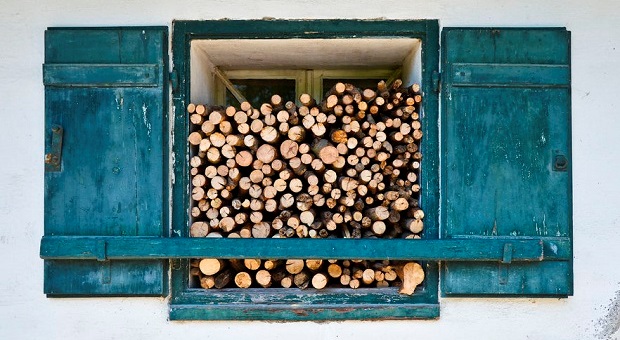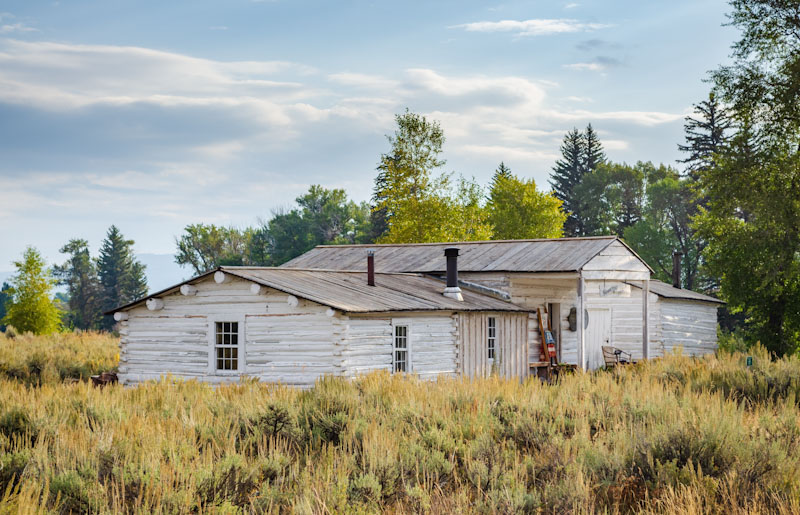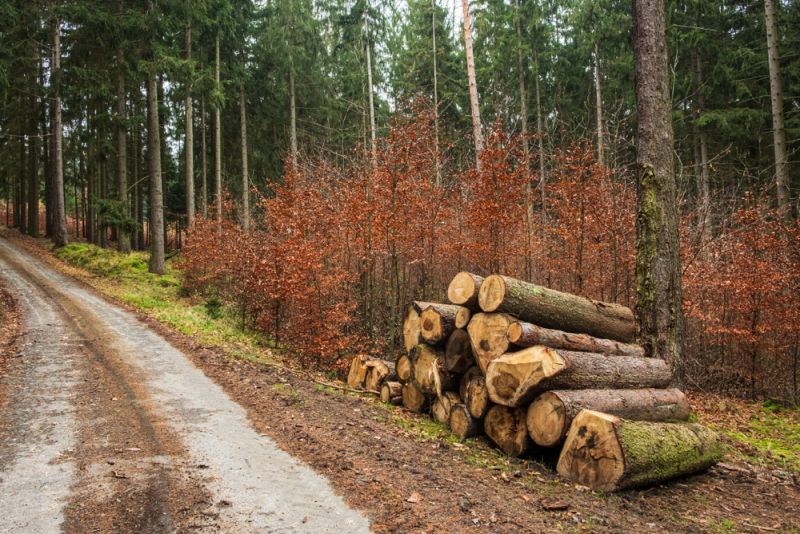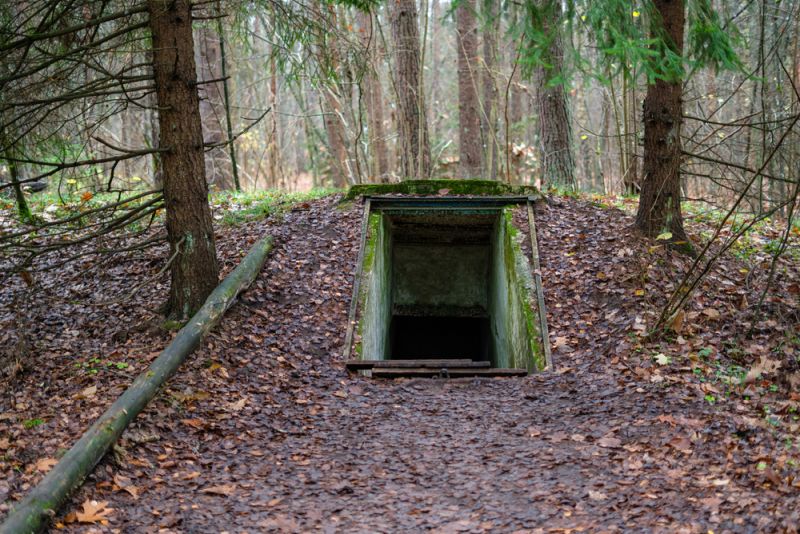To quote one of my favorite movies, “Brace yourself, winter is coming” folks. And if you’ve chosen wood for heating your homestead, you should pay extra-attention to this article.
Wood is an excellent choice for keeping your home cozy and warm during the harsh winter months and is the perfect alternative for cutting your heating costs, because it’s much less expensive than central heating that uses gas or electricity.
Especially when heating large rooms, wood works better than almost anything else. It’s a very cheap, efficient and quick heating method..
What Works and What Doesn’t
{adinserter emp}Now, that we’ve established that wood is a good alternative to electric or gas for heating, let’s see what makes for good firewood.
The difference between the good, the bad and the ugly when it comes to firewood is the moisture content and the density, because in final analysis, all trees are more or less “built” from the same stuff, chemically.
So, you should choose harder woods for your winter supply, which are denser than the softer varieties. Go for oak, ash, locust, black maple and hickory. These woods tend to burn way longer than the others and the coals they produce are hotter.
These qualities are great for the coldest months of the winter, and even for those long, chilly nights of late fall and early spring. Plus it’s efficient, as we’ll soon discuss.
You may be fooled by the abundance and cheapness of the softer woods, such as pine, but these tend to burn pretty quickly, and you’ll have to haul heavy loads day after day, maybe more often than you’d like, wasting time and effort. In the end, you’ll likely spend just as much buying the cheap stuff because you’ll burn twice as much of it.
Storing Your Winter Wood Properly
Regardless of the type of wood you’ve chosen, the biggest problem, especially during the winter, is the storage issue. It’s crucial to choose the proper storage method when it comes to your wood supply, thus protecting your investment and your hard work. You may have spent weeks cutting your firewood for the winter season ahead, but make sure that you don’t skip the final, extremely important step: stacking it.
Wood is highly susceptible to exposure to the elements, especially snow and rain. If your wood supply is stored improperly and it gets wet, that will lead to decay. Also, a pile of wood looks really cozy to various species of animals, snakes and insects looking for shelter, and I bet that’s not what you had in mind for your firewood stack, right?
Firewood that comes in direct contact with the ground is prone to insects and moisture exposure, and these accelerate the wood’s rate of decay, rendering it useless over time. By far, moisture is wood’s biggest enemy, as it also dramatically increases the chances of mold taking over your firewood supply.
All these things considered, it looks like the most challenging aspect of storage is how to keep your logs dry , isn’t it?
Having dry logs will make all the difference in the world when it comes to the efficiency of the wood stove/wood burner/chimney etc. This is a huge factor affecting the amount of heat your wood will produce. Keeping your firewood supply as dry as possible will maximize your investment and it’s beneficial for your homestead long-term.
Where Should You Start?
The first thing to contemplate is seasoning. Wood must be properly seasoned, and I mean dried, before you light your first winter fire. An insufficiently dried wood will tend to ignite harder, will burn inefficiently and will produce sub-par amounts of heat despite having a flame. It will also smoke and smolder.
How do you know your wood is seasoned good and proper? A few hints: dry wood is lighter (less moisture-less weight) and its ends are cracked. It turns deep brown, yellow or gray as it dries (wet/green wood is cream, white or light brown) and if you smash two logs together, they’ll sound hollow when they’re good and dry. Wet wood makes a dull thud.
To get the general idea about proper seasoning, softer essences of wood require six to twelve months while harder ones will need twice that (1 to 2 years).
To achieve proper seasoning, you should split the firewood before storing it into smaller sections, thus speeding up the drying process. Splitting it up increases the surface area which is exposed to the air. Alternatively, you can buy already split logs from a reputable supplier, to make sure you get high quality firewood that’s split properly.
You should allow the firewood to dry in the open air completely before storing it long term. The most important factor that contributes to open-air drying is the wind, as it speeds up the process, but never allow your logs to sit outside uncovered during a rainstorm. If your wood supply gets damp, it will take a long time to dry it out again.
Now, let’s see about storage options. Before storing your wood for the winter season, you must learn how to stack it properly.
This may take a little practice, but it’s very important to stack your firewood the right way when storing it. The general idea is to allow the air to circulate freely by leaving gaps between the logs and each layer must be stored in the opposite direction of the next, to assure the best ventilation possible. Check out the video below.
Video first seen on Cottage Life DIY
If your firewood is stacked next to a shed, a wall or some other structure, allow plenty of space between the stack and the respective wall (at least a 2 to 4 inch gap) , to allow the air to circulate freely. Failing to do that is a common mistake folks tend to make and it leads to termites popping up in your wood supply and wet logs. Oh yeah, and in your house, too, if it’s wood.
Another common mistake and one that can cause the most damage, is to cover your logs completely, thus stopping air circulation. This translates into moisture taking over, damaging the firewood and rendering it useless. If you cover your wood stack, be sure to allow proper aeration by leaving the sides uncovered.
Always remember to bring the logs inside your house a day in advance before you use them for heating purposes. Store them inside in a dry location such as your wood bin and they’ll be in perfect shape the following day. That brings us to storage options.
What About Storage Options?
Always think ahead when it comes to storing firewood. The general idea is to choose the perfect location at each step, from where you’re going to let it season, to where you’re going to store it within reach, to where you’re going to store it once you bring your firewood into the house.
Just think about it: logs are bulky and heavy, and carrying them day after day to your house is hard work, especially if you’ll require several trips for a day’s supply. So, do yourself a “solid” and store your seasoned firewood as close and as practical as possible to your heating device. You’ll thank yourself later.
Obviously, firewood must be stored outside of your home, never inside. Just think about termites and ants, along with other nastier bugs. They all love wood and you don’t want these intruders inside of your house now, do you?
Talking about outside storage, there’s an invention called a woodshed. While you can keep a small amount of wood inside the home, ready to be burned, seasoned firewood is best kept in an outside woodshed.
Video first seen on Jyienger
If that’s too much for you, a DIY log rack is the next best thing for storing wood for the winter. It’s important that you elevate it, at least 2-3 inches off the ground, to keep your firewood dry and protected from insects.
If stacking firewood outside, it would be a great idea to cover it, in order to protect your supply from the elements, but remember to avoid the mistakes we’ve already mentioned. You will find specially designed rack covers in retail stores, featuring tie downs to keep them from flying away when the wind blows. These covers also have slits or perforations in the material to keep the air flowing freely.
Obviously, you can store firewood under any solid structure, such as an awning or a garage roof, or even a basement if it’s not connected to the rest of your house as long as you follow the rules of ventilation, elevation and space that we’ve already discussed.
Always remember to put the larger logs at the bottom of the stack in level rows and make sure your pile isn’t leaning. Also, don’t build the firewood-stack too high, which will make it difficult for you or shorter family members to reach, and will also make it dangerous to be around because it may lean or even fall over somebody.
I hope the article helped and if you have ideas or comments, feel free to use the dedicated section below, we’d appreciate your feedback.
This article has been written by Chris Black for Survivopedia.









Pingback:This Is How To Protect Your Firewood During Winter – Survivalot | December 25, 2015
|
Pingback:This Is How To Protect Your Firewood During Winter | Freedom Newz | December 25, 2015
|
Pingback:This Is How To Protect Your Firewood During Winter | Bsn Global News | December 25, 2015
|
michael | December 26, 2015
|
Hi mate excellent article and video thank you
Pingback:Survival News 12/25/15 | Survival Pulse | Daily Survival & Prepper News | December 26, 2015
|
Pingback:Survival Projects: DIY Small Cabin | Freedom Newz | December 27, 2015
|
Ian | February 11, 2016
|
Why is it that there’s no mention of paper logs ? I use a log maker sitting inside a home built frame and an ordinary car jack to compress it, then I remove the top part, add more pulp and REALLY compress it. Then leave for a few minutes until water stops coming out of it. Takes longer to make each log/brick this way, but they dry much faster and burn for longer
Pingback:10 Trees A Prepper Needs For Food And Health | Prepper's Survival Homestead | March 14, 2016
|
Dan | Fire And Saw | April 9, 2021
|
It goes without saying really but make sure you store wood where it gets the most sun throughout the day. That helps to dry it out and prevent it from rotting. I’ve found that having it under shelter isn’t the most important thing when it’s first cut. A bit of rain can help season it when it’s wet and sappy!
Mark Chard | June 7, 2021
|
This post is too much helpful. Thank u so much, Chris.